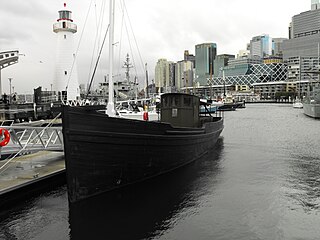Lots of water over the dam since our last. Short version: Went to MT for 40th reunion, missed (I wouldn't say I "missed" it) the formal event scheduled and instead joined other misfits at Hap's Bar. Pictured below, a low dive located across the street from the Northern Pacific depot. the same as it's been since 1920.
On the same block - with the only remaining brick-cobbled pavement in Helena - are two original false-fronted buildings.
Anyway, wild cavorting by decrepit geezers.
That was then - this is now... Let's watch the MOLLE vid again!
Kidding, I am wasting your time for a reason, however suspect said reason may be.
The stalwart gentlemen pictured below:
The crew of MV Krait, a Japanese, fishing vessel taken over by Commonwealth forces at Singapore early in the second war.
At first she did lots of odd jobs for the Allies in SE Asia for but nothing involving any derring-do.
 Until, all by her lonesome - while crewed by the guys above - she wreaked havoc in Singapore harbor in September, 1943.
Until, all by her lonesome - while crewed by the guys above - she wreaked havoc in Singapore harbor in September, 1943.It was referred to as "Operation Jaywick" and was pulled off by means of this "innocuous" fishing boat which carried the, mostly Aussie, members of "Z Special Unit".
They anchored the Krait (a "museum boat" in the modren day) in the same spot where the local fishermen did and crept out in collapsible kayaks to stick limpet mines on Japanese ships.
What the hell is a limpet mine?
 Named for that hardy little beastie the limpet of course.
Named for that hardy little beastie the limpet of course.It's a better name than "barnacle mine", innit?
These are mines that are stuck onto the hull magnetically.
The boys from the Krait - pictured left in her new home - sank or seriously damaged four Japanese vessels.
Eventually the "Z" Unit did another 80, similar missions but one, the dry run for Jaywick, was really in a class by itself.
When the whole idea of cruising in, looking like Malay fishermen (They'd dyed their hair black and stained themselves brown), then sneaking out to do mischief was born, the need for a "test drive" of the concept was obvious from the start.
While wisely never putting anything in writing, they decided to run a dummy attack against a well-defended, Allied port - just to see how it went. Then figure it out from there.
They chose Townsville, a busy city in NE Australia which served as a major Allied staging area, hence it possessed a harbor full of troop transports, merchantmen and naval escort vessels - which were therefore defended correspondingly.
The plan would be essentially the same as the one for Singapore, due to happen only three months later except they didn't use the Krait. They just paddled into the harbor.
They stuck dummy mines on ten ships - two of them warships. Then skated out and went into Townsville and went to sleep.
At about 10:00 the next morning; bricks were shat - every rank from Fleet Admiral to Seaman-Deuce squatted - and shat; when the offloading of one cargo vessel exposed a "mine" (!!!).
The people in command had a strange feeling that they knew what was up.
A carpet had people called upon it.
Mistakes were made.
The appropriate parties were harangued and hopefully everyone grew through the experience.
Out of contrition, the bad boys offered to remove the "mines" but weren't allowed to. No one wanted to trust these guys. Maybe the mines weren't just full of sand.
In any case, "Z" Special Unit had their answer regarding their plan.
Being that they were a recon/sabotage unit, they got to play with some very cool toys one of the coolest being the "submersible canoe".
 But this ain't about personal watercraft.
But this ain't about personal watercraft.The "Z" boys also had their own knife, pictured below. These knives, which are hard to come by these days, were a variation on the Clements Knife/BC-41 theme with a few tweaks. Huge pointy knucks, finger loops all the same size so it can be held either way and handle castings made from brass or zamack.
Now... what the hell is "zamack"? Its name tells you the recipe: Zinc, aluminum, magnesium and copper. Nowadays we speak of it disparagingly as "pot metal" or "white metal" but it's pretty good shit. Up to three times as strong as cast aluminum with tensile strength equal to some flavors of cast iron and it can be poured in very thin cross-sections.

This photo shows a zamack model.



Just as an interesting aside - zamack was/is used by Lionel Trains for the shell ("boiler") casting on their toy steam locomotives
ReplyDelete